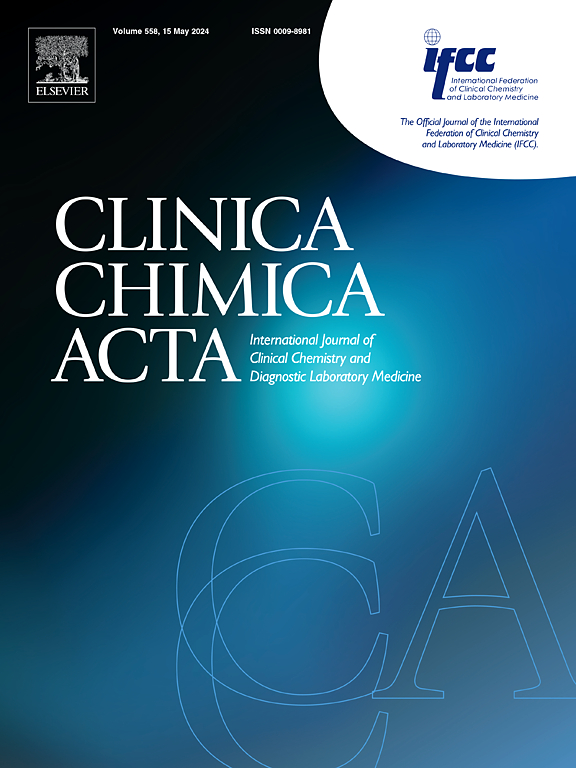Measurement of AST and ALT with Pyridoxal-5′-Phosphate according to IFCC: A decades-long gap seems to be filled
IF 3.2
3区 医学
Q2 MEDICAL LABORATORY TECHNOLOGY
引用次数: 0
Abstract
Pyridoxal-5′-Phosphate (PLP) is not always added to the reagents for the measurement of Aspartate Amino Transferase (AST) and Alanine Amino Transferase (ALT), although the International Federation of Clinical Chemistry recommends using it as a cofactor. This is true for patients with lower Vitamin B6, precursor of PLP. The aim of this study is to compare the methods for transaminase measurement with or without the presence of PLP.
102 leftover LiHe samples were collected after transaminase measurement with the reagent already including PLP (R). The residual plasma was analyzed on the ILab Taurus instrumentation (Werfen, Spain) using Werfen reagents with (WP) and without (W) PLP. Vitamin B6 results were obtained on the respective residual K2-EDTA whole blood. Qualitative and quantitative statistical analyses were performed.
Optimal agreement and comparability were found between R and WP. Addition of PLP to the reagents shows an average percentage increase in ALT concentrations of 12 %. Patients were categorized for Vitamin B6: the median value of WP-W for patients with lower Vitamin B6 is 34, 18 for patients with higher Vitamin B6 (p = 0.006), demonstrating that ALT values are higher when measured with WP for patients with low Vitamin B6.
The addition of PLP to reagents has greater accuracy in transaminase determination, promoting optimal comparability of the results between different methods, particularly in patients’ samples with reduced Vitamin B6. Users should adapt their procedures to overcome the difficulties related to the lower stability of transaminase reagents containing PLP, respecting also the recommendations of international scientific societies.
求助全文
约1分钟内获得全文
求助全文
来源期刊

Clinica Chimica Acta
医学-医学实验技术
CiteScore
10.10
自引率
2.00%
发文量
1268
审稿时长
23 days
期刊介绍:
The Official Journal of the International Federation of Clinical Chemistry and Laboratory Medicine (IFCC)
Clinica Chimica Acta is a high-quality journal which publishes original Research Communications in the field of clinical chemistry and laboratory medicine, defined as the diagnostic application of chemistry, biochemistry, immunochemistry, biochemical aspects of hematology, toxicology, and molecular biology to the study of human disease in body fluids and cells.
The objective of the journal is to publish novel information leading to a better understanding of biological mechanisms of human diseases, their prevention, diagnosis, and patient management. Reports of an applied clinical character are also welcome. Papers concerned with normal metabolic processes or with constituents of normal cells or body fluids, such as reports of experimental or clinical studies in animals, are only considered when they are clearly and directly relevant to human disease. Evaluation of commercial products have a low priority for publication, unless they are novel or represent a technological breakthrough. Studies dealing with effects of drugs and natural products and studies dealing with the redox status in various diseases are not within the journal''s scope. Development and evaluation of novel analytical methodologies where applicable to diagnostic clinical chemistry and laboratory medicine, including point-of-care testing, and topics on laboratory management and informatics will also be considered. Studies focused on emerging diagnostic technologies and (big) data analysis procedures including digitalization, mobile Health, and artificial Intelligence applied to Laboratory Medicine are also of interest.
 求助内容:
求助内容: 应助结果提醒方式:
应助结果提醒方式:


